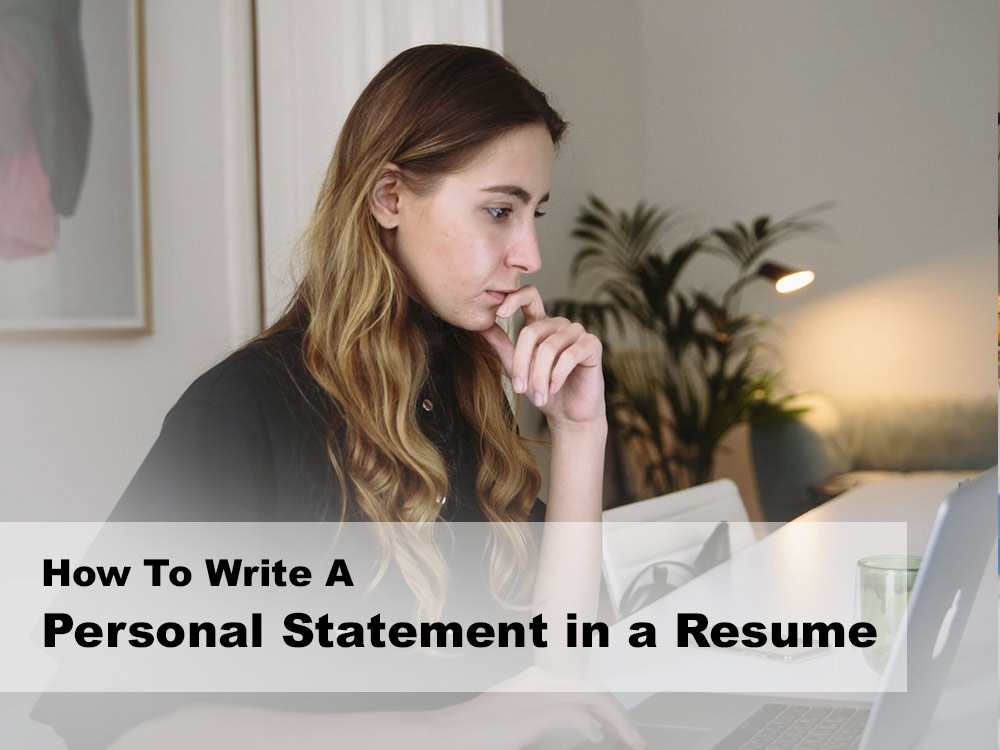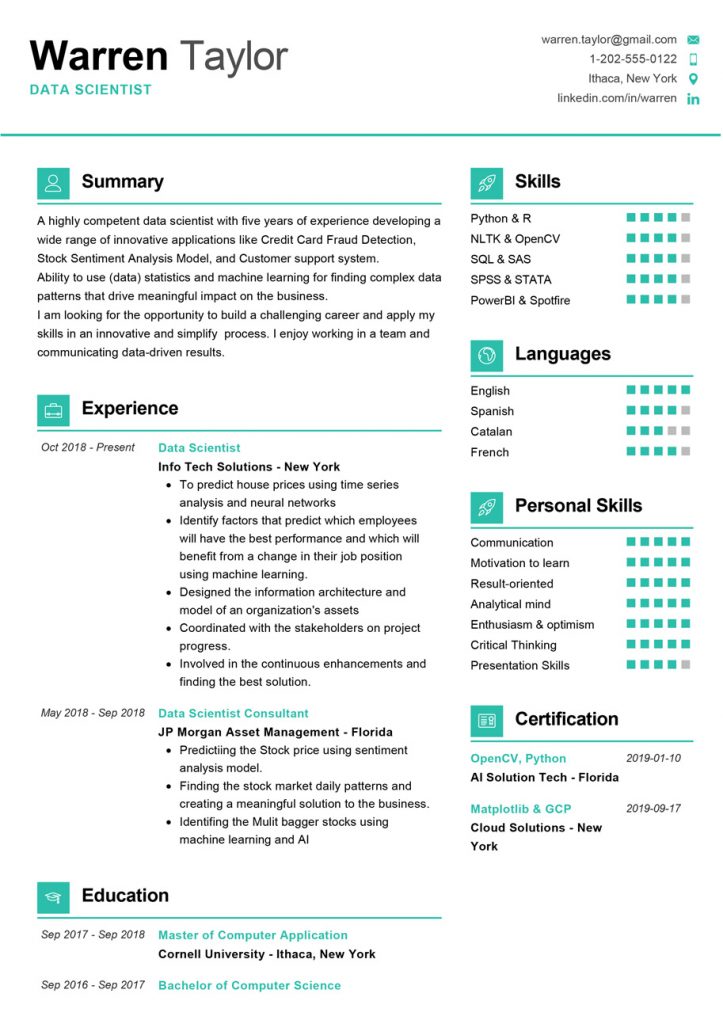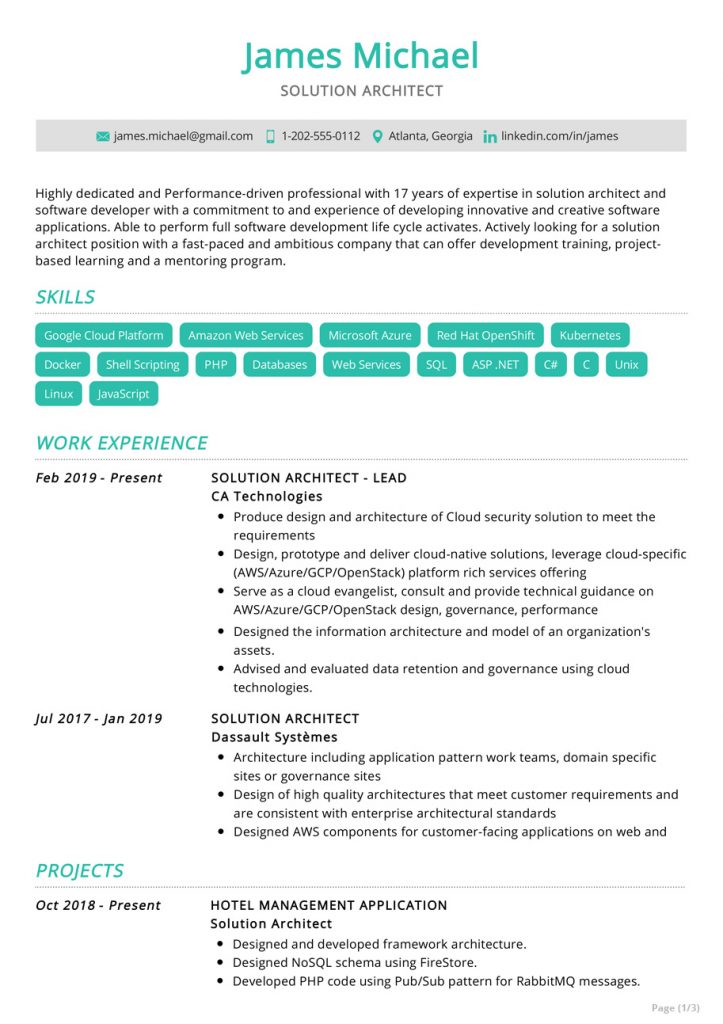
How To Write A Personal Statement in a Resume
Resumes are fantastic when you know how to format them. Past job experiences, education, and certifications, special skills, they all matter. But what often gets pushed to the side is that tiny little section between your contact details and your past work experience. This is known as the personal statement or the career statement, depending on what format or template you use. Do you omit that section completely from your resume because it seems to useless? You aren’t the only one, but it could be hurting your chances.
What is a personal statement?
The role of the CV personal statement is to help recruiters understand who you are, what you can do for them, and why they want to hire you instead of the other guy. It’s designed to be short and sweet but chock-a-block full with all of the information that makes you a good candidate.
There are thought to be three main sections of a personal statement. The first section introduces who you are as a professional. The second section shows how you can be useful in the role they are hiring for. The third section will help them to see what your goals are if they hire you. Are you a long-term solution or just something who is looking to gain some experience and then pop off somewhere else?
The personal statement will tell the recruiter, in a nutshell, whether the rest of the resume or CV is worth reading or not. It often can be the only thing that they read. As such, if you don’t even have one, it may immediately put your resume on the “no” pile.
Create your professional resume for free using our resume builder!


How do you format a resume statement?
Now that you know the importance of this resume statement, it’s time to make sure that you are formatting it the correct way to make for easy scanning of the right, intended information for both you and the recruiter. Here are the details to remember.
- Make sure all 3 parts are present: You need to make sure that you’ve addressed all their parts properly in 1 sentence per section (2 at the very most):
- Who you are: Why are you important to them as an individual? What part of your career and field do you like? These are details to include in this sentence.
- Your importance to them: That’s all great, but why should they care? What achievements do you have that make you the ideal candidate for the position? Use this sentence to highlight the most relevant details.
- Your goals: Make it clear what you’re looking for. Do you want short-term or long-term? Part-time or full-time? All of this matters and it should be in the last part of your introduction.
- Choose a first or third person to match the rest of your CV: You can choose between writing in the first person, “I” or third person, “s/he”. If you decide on the latter avoid the actual pronoun of her or him. Frame it so that there is no pronoun needed. After all, they know who you are already.
- Consider tailoring it per job (and per position): You don’t have the space or the time (from the recruiter) to address the position that you’re applying for, so make sure that you write a fresh one of these for every single position. It’s excellent practice and the fact that it is tailored will show up to the recruiter — in a good way.
Details to remember when creating your career statement:
Now that you understand its importance and how to go about creating it, it’s time to do just that. When you sit down to actually put this important introduction together, here are some details to keep in mind to help it stand out as well as make the writing process itself a little easier.
- Short and sweet: This was stated above, but it’s important enough to put here. This statement should be between 50-200 words. Ideally, closer to 50 if possible. The focus on this is to give your recruiter a quick read. If you go on for sentences and sentences, even if you have the best intentions, they’ll simply toss it aside and move on, Harsh, yes, but certainly the truth.
- Give yourself time to adjust: It takes time, patience and practice to nail a resume statement. Give yourself time to get used to making them. Practice as much as you can and don’t be afraid to take a look at the many, many samples online to help guide you if you don’t know where to start. The more you practice, the stronger it will be. This will all do good things for your resume as a whole as well.
- Easy on the keywords: While including keywords is always good in an introduction, don’t go overboard. Use a few select keywords directly from the job advertisement and then let the other ones (“self-motivated”, “professional”, etc) ones slide. The only ones you should use are the ones that pertain specifically to the job application itself.
- Make it you: While it’s important to hold a professional tone and to keep it focused on the job, don’t make it too generic either. Ir should reflect you as a professional and you as a person. Something that reads like it’s copied out of an SEO guidebook isn’t going to go over well with the recruiter, as they’ll feel as though they are just being told what they want to hear.
Your resume is important from top to bottom, including its personal statement. These tips will help you make the most out of the small section so that the hiring committee can see that you are dedicated to the job, excited about applying and that you are qualified. Since most of them spend less than 10 seconds reading resumes during the first round of cuts and considerations, it could be just what gets you to the next stage, then an interview, and, ideally, the final job position itself!
Frequently Asked Questions
The definition of a personal statement according to Merriam-Webster dictionary is “a short essay that introduces a person, tells something about the person’s life or experiences, and makes a statement about the person.”
A personal statement can be used for a variety of reasons, but the main purpose is to give colleges and employers a better understanding of who you are as a person and as a potential student or employee.
Some tips for writing a personal statement include: being concise, using active voice, and being honest.
A personal statement should be about one to two pages in length.
When writing a personal statement, you should include information about your background, experiences, and goals.
Some things to avoid when writing a personal statement include: using clichés, making grammatical errors, and including too much personal information.
Yes, there are many examples of personal statements online and in college applications.
A personal statement can be important in helping you to get admitted to a college or to get a job.
Some benefits of having a personal statement include: giving colleges and employers a better understanding of who you are, and helping you to stand out from other applicants.
A personal statement can help you get a job by giving employers a better understanding of who you are and what you have to offer.
Related Articles:
How to Write a Resume
What is a Functional Resume?
Best Resume Formats

